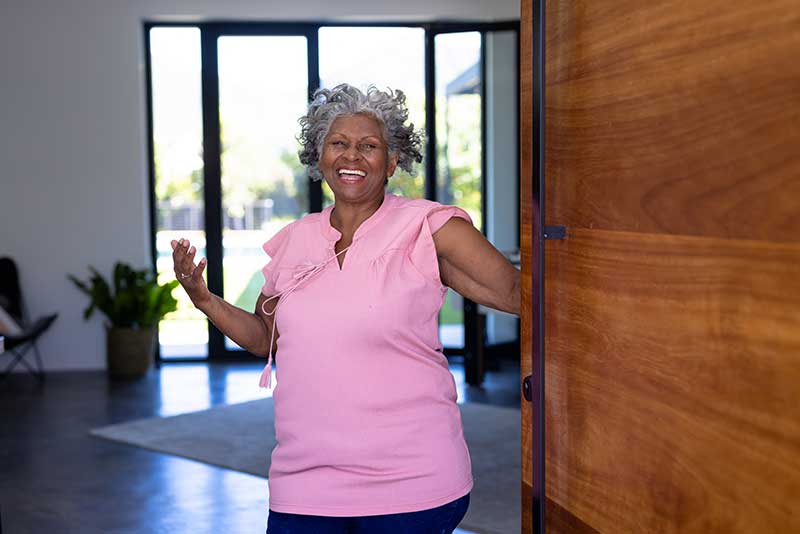As we age, our living spaces frequently require modifications to keep us safe and comfortable. Adapting your house to meet the needs of elderly residents entails more than just adding practical features; it’s also about establishing an environment that promotes independence and well-being. Here, we’ll look at important home safety and adaption advice, how to integrate smart technology for increased security, and whether it’s time to think about downsizing or moving to a senior living community.
Preventing Falls: The First Step Toward Safety
Falls are a common source of injury among older persons; yet, with intelligent changes, many of these mishaps can be avoided:
- Remove tripping hazards: Secure rugs with nonslip padding, remove clutter from the floor, and keep wires out of paths.
- Improve lighting: Install brighter bulbs and motion-sensor lights in hallways, restrooms, and stairs to light up paths at night.
- Add grab bars and handrails. Place these supports in strategic locations, particularly in bathrooms near the toilet and shower, as well as on both sides of stairwells.
Making Bathrooms Safer
The restroom is a popular location for falls due to slick surfaces. Implement the following improvements to make it a safer space:
- Non-slip mats can be used inside the tub or shower as well as outside.
- Raised toilet seats make it easier to sit and stand, which reduces strain and the chance of falling.
- Walk-in Tubs and Showers: Consider replacing standard bathtubs with walk-in ones to avoid having to step over high edges.
Embracing smart home technology
Smart home technologies are more than simply modern comforts; they provide considerable benefits to elders by improving home security and easing everyday duties.
- Voice-Activated Systems: Smart speakers can control lights, thermostats, and even locks, eliminating the need to walk around for these chores.
- Security cameras and doorbell cameras allow residents to see who is at the door without having to open it and to watch their home’s exterior from the safety of their own home.
- Medical Alert Systems: Wearable devices that detect falls or allow the wearer to ask for help with the press of a button provide peace of mind and prompt assistance when needed.
Recognizing When is it time to downsize or move?
Despite greatest attempts to adapt a home, the space may eventually no longer satisfy the resident’s needs owing to health difficulties, maintenance challenges, or social isolation. Here are some signals that it’s time to think about downsizing or relocating to a senior living community:
- Maintenance Becomes Overwhelming: Keeping up with a large home may be physically and financially exhausting.
- Mobility Issues: If the residence cannot be efficiently adapted to accommodate mobility needs, or if the necessary renovations are prohibitively expensive.
- Seeking Community: Many seniors discover that living in a community with peers and convenient amenities improves their quality of life.
Adapting your house for senior living is a proactive way to maintain safety, comfort, and independence as you age. Whether making tiny changes, adopting technology, or considering a move, the goal is to create a living environment that promotes your well-being over time. Remember that talking with a specialist can provide personalised advice targeted to your individual requirements, ensuring that your house stays a secure haven.







